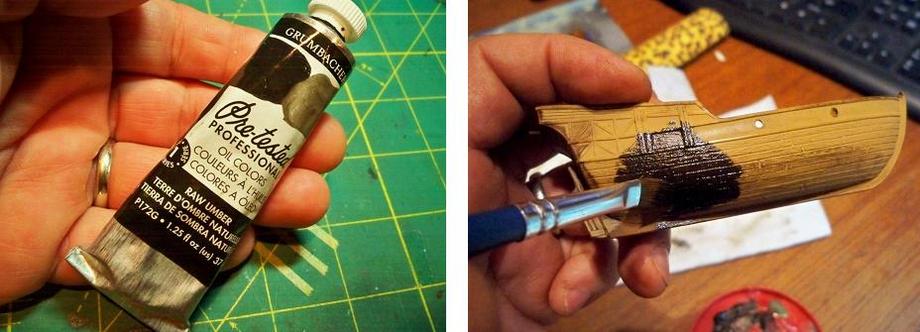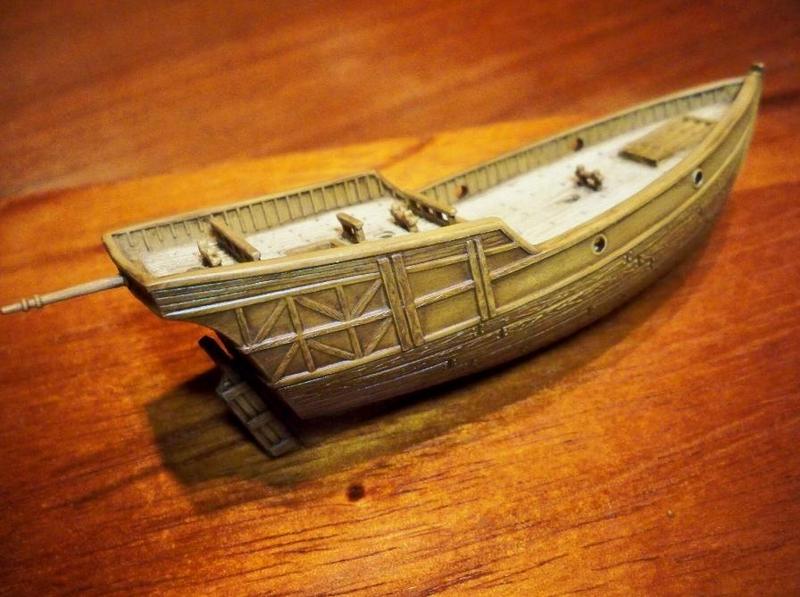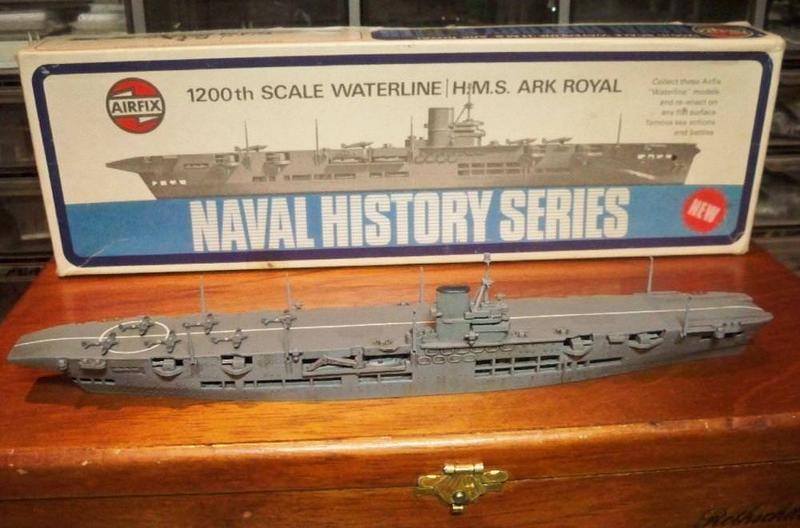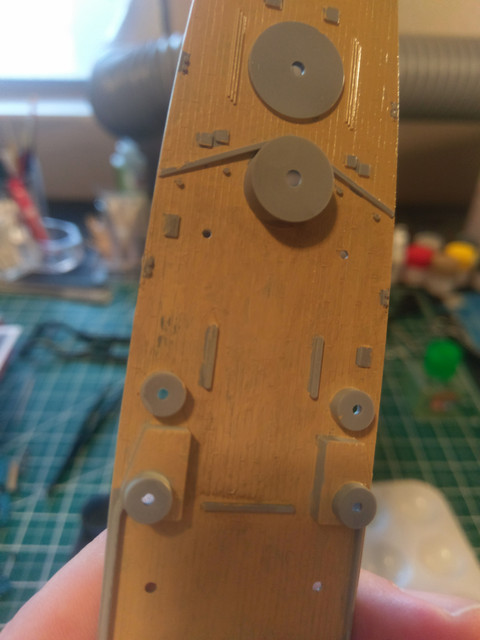
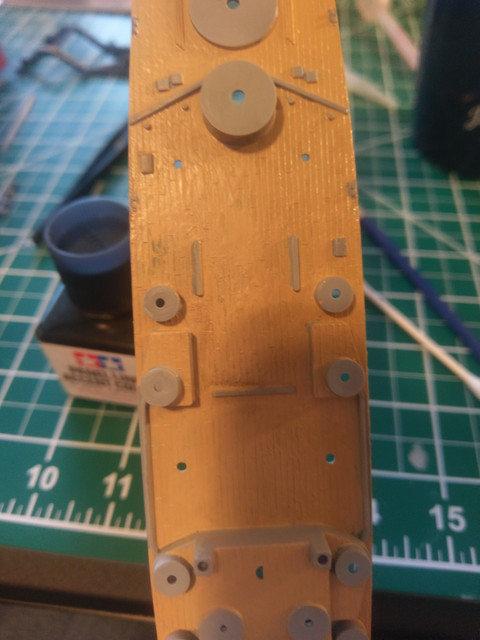
I thought to myself, "Self, this is probably from the enamel thinner being Testors and not Tamiya. No big deal, I can repaint this." So I touched it up and no big deal.
So at this point, I figures I needed to thin it out some more and I tried my hand at some light weathering on the hull:
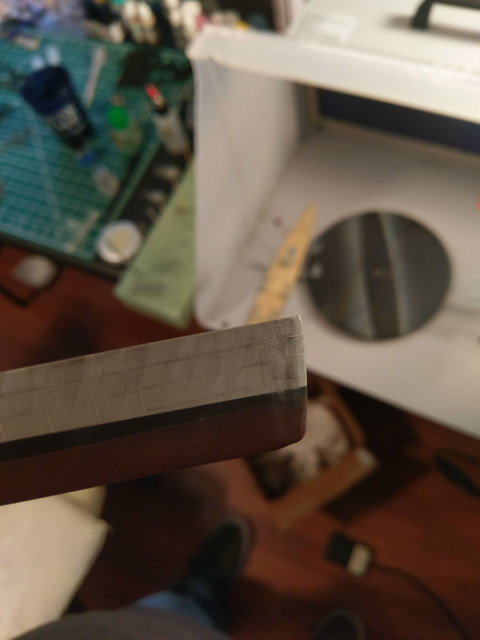
And the Future didn't stand a chance. So as awesome as the paint melting is at this point, I grabbed my Windex:
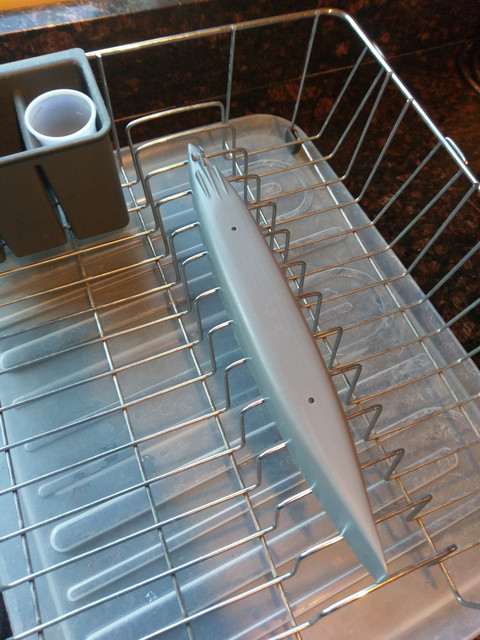
We are back to naked hull. Which is kind of good as I didn't like my boot stripe and wanted some more red in the Hull Red. So my questions is: Would I be better off getting some Krylon Fusion and using that, or should I try Future again?











